

Uncategorized
Amazon will let customers try on clothes before they buy
Nulla pariatur. Excepteur sint occaecat cupidatat non proident, sunt in culpa qui officia deserunt mollit anim id est laborum.
Et harum quidem rerum facilis est et expedita distinctio. Nam libero tempore, cum soluta nobis est eligendi optio cumque nihil impedit quo minus id quod maxime placeat facere possimus, omnis voluptas assumenda est, omnis dolor repellendus.
Nulla pariatur. Excepteur sint occaecat cupidatat non proident, sunt in culpa qui officia deserunt mollit anim id est laborum.
Sed ut perspiciatis unde omnis iste natus error sit voluptatem accusantium doloremque laudantium, totam rem aperiam, eaque ipsa quae ab illo inventore veritatis et quasi architecto beatae vitae dicta sunt explicabo.
Neque porro quisquam est, qui dolorem ipsum quia dolor sit amet, consectetur, adipisci velit, sed quia non numquam eius modi tempora incidunt ut labore et dolore magnam aliquam quaerat voluptatem. Ut enim ad minima veniam, quis nostrum exercitationem ullam corporis suscipit laboriosam, nisi ut aliquid ex ea commodi consequatur.
At vero eos et accusamus et iusto odio dignissimos ducimus qui blanditiis praesentium voluptatum deleniti atque corrupti quos dolores et quas molestias excepturi sint occaecati cupiditate non provident, similique sunt in culpa qui officia deserunt mollitia animi, id est laborum et dolorum fuga.
“Duis aute irure dolor in reprehenderit in voluptate velit esse cillum dolore eu fugiat”
Quis autem vel eum iure reprehenderit qui in ea voluptate velit esse quam nihil molestiae consequatur, vel illum qui dolorem eum fugiat quo voluptas nulla pariatur.
Temporibus autem quibusdam et aut officiis debitis aut rerum necessitatibus saepe eveniet ut et voluptates repudiandae sint et molestiae non recusandae. Itaque earum rerum hic tenetur a sapiente delectus, ut aut reiciendis voluptatibus maiores alias consequatur aut perferendis doloribus asperiores repellat.
Lorem ipsum dolor sit amet, consectetur adipisicing elit, sed do eiusmod tempor incididunt ut labore et dolore magna aliqua. Ut enim ad minim veniam, quis nostrud exercitation ullamco laboris nisi ut aliquip ex ea commodo consequat.
Nemo enim ipsam voluptatem quia voluptas sit aspernatur aut odit aut fugit, sed quia consequuntur magni dolores eos qui ratione voluptatem sequi nesciunt.
Environment
Lost anchors: Maiduguri women bear bitter burden of September flood
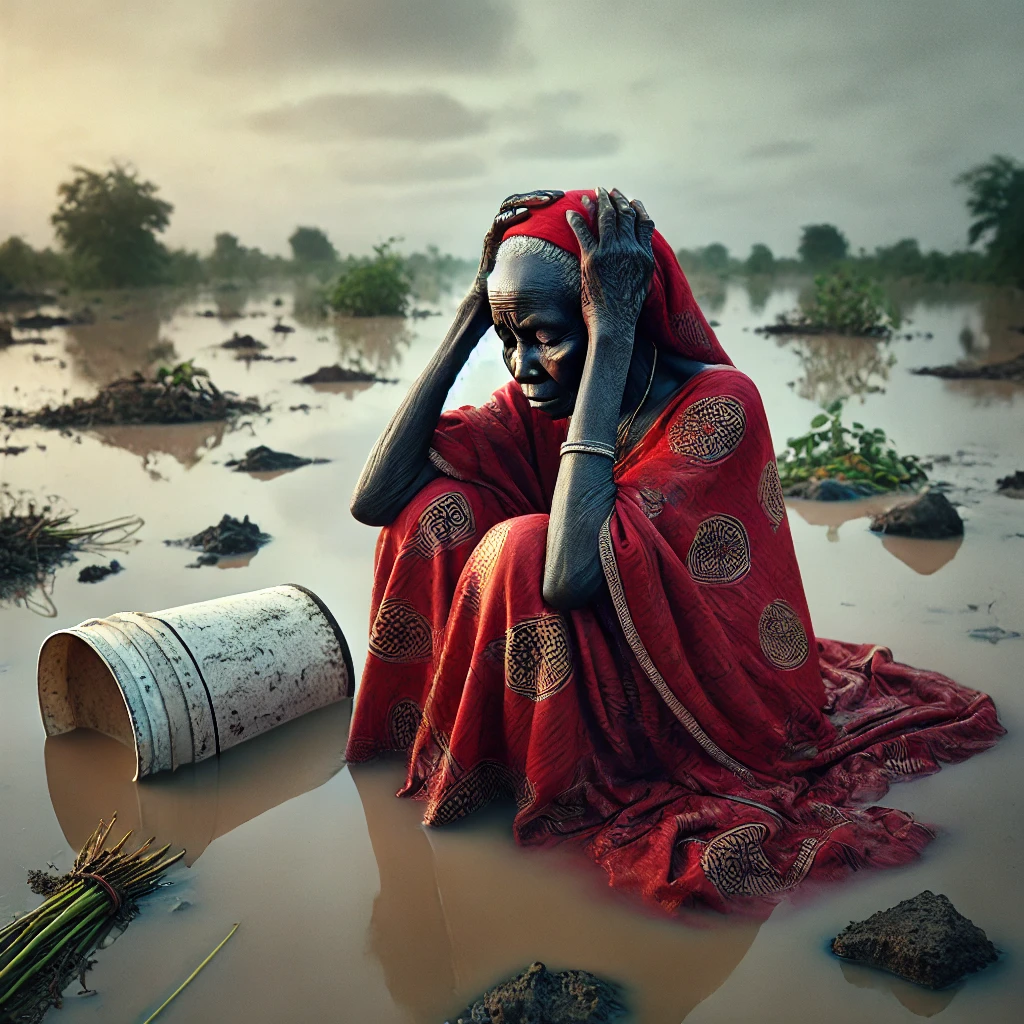
 Lost anchors: Maiduguri women bear bitter burden of September flood
Lost anchors: Maiduguri women bear bitter burden of September flood
- The flood took their homes, but it is hunger that seals their fate
- At the mercy of predators: Sad fate of widows, mothers, daughters adrift in wreckage of an unforgiving deluge
- Stripped of family, hope, their only constant is the struggle to survive
Environment
It smelled like death: How flood disaster erase Borno’s blind elderly

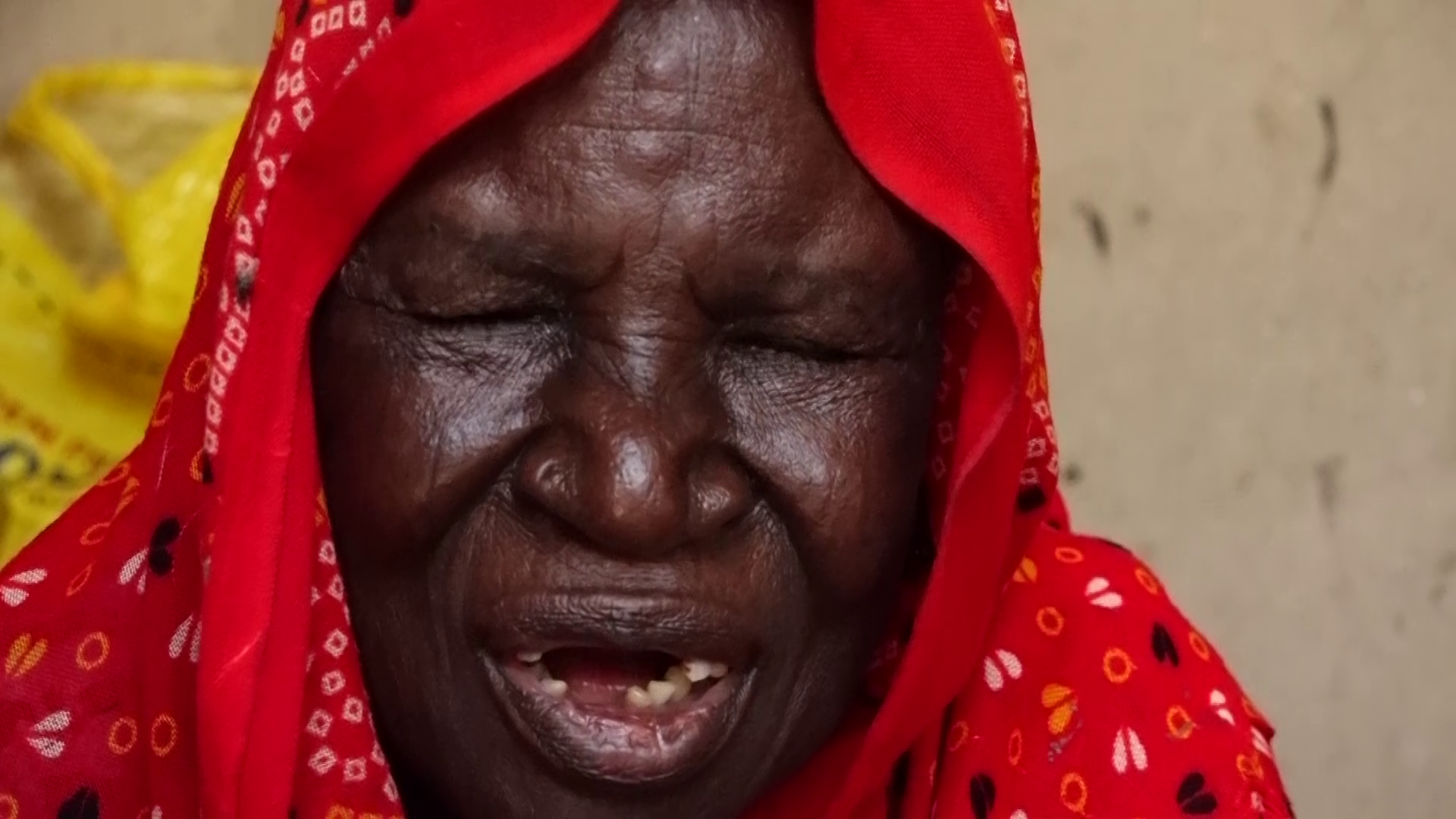
- In belly of the beast: Haunting reality of Zara Aji, others’ amid Maiduguri’s reptilian waters
- As waters recede, PWDs wander through a world they cannot see, that will not see them
- Betrayed by policy, drowned by nature: Non-inclusive laws leave PWDs gasping for survival
By Olatunji OLOLADE, Associate Editor
The flood stole silently at first, slithering through the streets of Gwange like a reptilian beast. Until it got to Zara Aji’s home. By the time Aji stirred in her bed, she was soaked to the pants. The Alau Dam had collapsed hours before, spilling with nature’s pent-up rage. It was 3 a.m. when the water began its slow, fearsome crawl into her abode.
The cold splash from her feet up to her midriff startled her fully awake, but her blindness kept her trapped in a black sea of panic. Aji could hear the roar of the waters outside, and its chilling hum inside her room. She sat, helpless, dreading the rising tide of doom. At 83, her body was frail, her sight stolen by the passage of time. As the flood rose to her waist, the house groaned around her, listing to the weight of the water gushing in from every crack and crevice. The room was no longer hers but a watery tomb. And yet, in that critical moment, salvation came in the form of her grandson’s love.
Mohammed, having heard the chilling hiss of the flood as it licked the edges of their compound, was up in an instant, wading through the house, daring the surge in search of his granny.
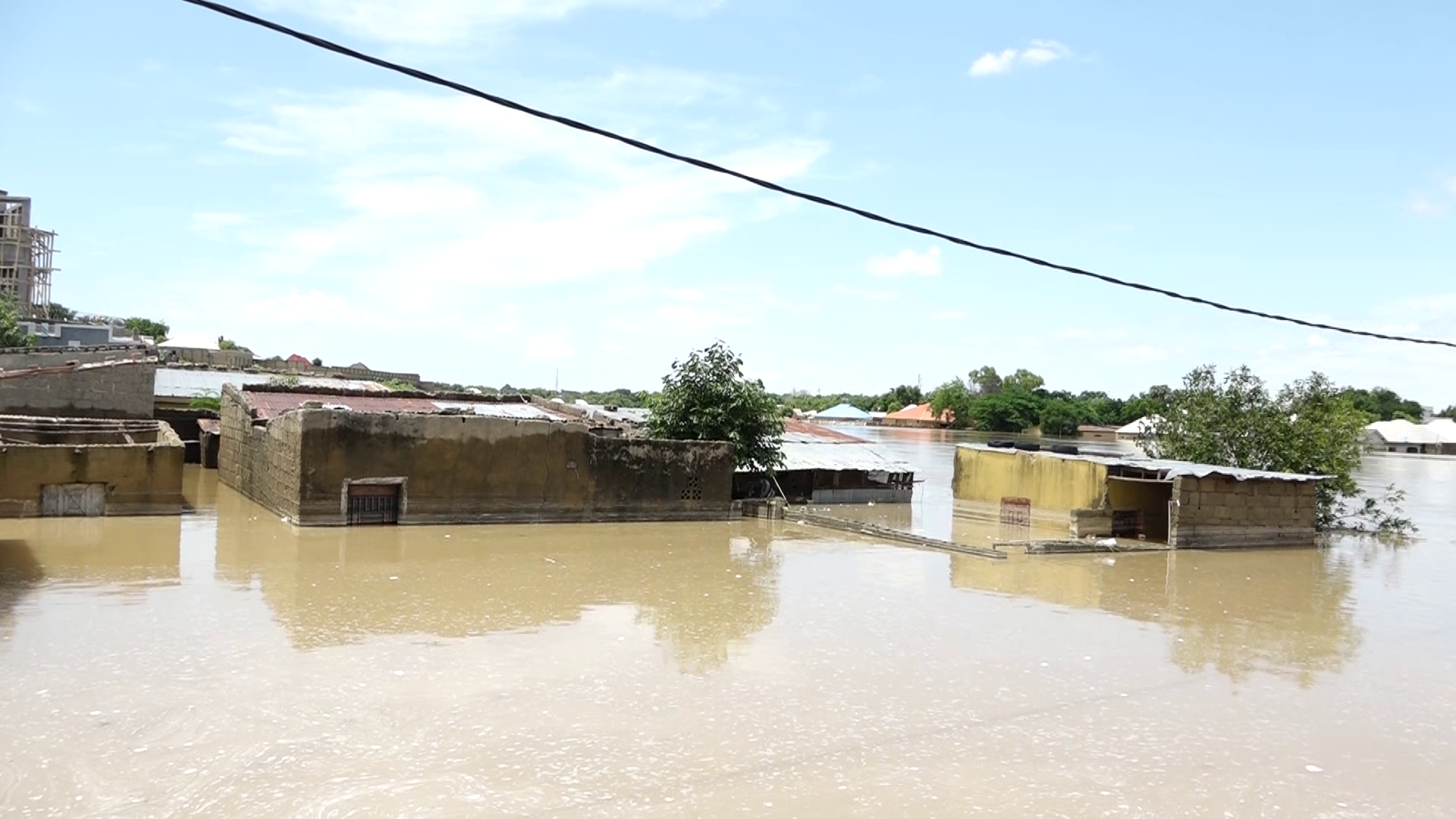
A debt of love carried through cold waters
Mohammed found Grandma Aji shivering in bed. Instantly, he lifted her frail body onto his back. The weight was light, but the task heavy, but the teenager waded through the depths of the flooded house, each step a battle against the current that sought to pull them both under.
Tears slid down Grandma Aji’s cheeks, as she clung to her grandson, the poetic resonance of the moment sinking into her heart. In that moment, he was no longer the toddler she rocked to sleep on her back, singing soft lullabies. The roles were reversed. The grandson was now the saviour and protector, bearing his grandma to safety through dangerous waters.
Aji could feel the waters splashing against the boy’s chest. She could hear him grunt as he fought to keep them moving. And in the darkness, as the deluge threatened to take everything from them, there was a strange, haunting beauty in the way love had come full circle.
Mohammed hastened out of the house before its walls crumbled. There was no turning back. The water seemed endless. But they moved through its depths, slowly but steadily towards London Chikki. The journey was treacherous, but the boy didn’t falter. He held tightly to his grandmother, knowing that in that moment, he was carrying more than just her frail body—he was bearing a lifetime of memories, of love, of shared history.
Into the shallows, but not to safety
They sought refuge in the London Chikki area, but the flood had not spared it either. The waters were still rising, the current still swirling to pull them both under. “We walked again,” Aji recalled, her voice frail with grief and exhaustion. “We walked until we reached the main road.”
For three days, they stayed on that road, waiting for the waters to recede, like so many others whose lives had been uprooted by the flood. They watched the sky for signs of hope, but none came.
Hunger gnawed at their stomachs, and the cold seeped into their bones. They were far from safety, but at least they had survived.
Eventually, they sought refuge with Aji’s brother, who took them in until the waters receded.
As the floodwaters receded, the destruction left behind was staggering. What they returned to was not a home but a hollow shell of what once was. Aji’s home was gone, reduced to a pile of broken walls and sodden memories. Her clothes and few possessions had been swept away in the torrent, leaving her destitute.
“The government didn’t provide anything for us,” she said, her voice carrying the weight of betrayal. “We heard there was support, but it never came to our community.”
The flood had claimed so much—her home, possessions, and sense of security—but at least it had not taken her.
 The flood destroyed visually impaired Zara Aji’s home, leaving in its wake a pile of rubble.
The flood destroyed visually impaired Zara Aji’s home, leaving in its wake a pile of rubble.
Lost in the torrent: Stories of the invisible
Aji’s experience is one among several narratives of persons with disabilities (PWDs). And they all resonate with a deafening chill. For most elderly PWDs, the flood was not just a natural disaster but a test of survival against unimaginable odds. As the waters rose and people fled, PWDs who could not see the danger approaching, were left behind.
Not all were so fortunate, like Aji. On the same night that her grandson rescued her, Safinatu Bala and her friend, Seyidatu, got lost in the waters. Widows both, the two women reportedly lived side by side in Gamboru, their lives intertwined by friendship and a shared hardship of visual impairment.
When the flood came, they clung to each other, and wailed for their neighbours to rescue them from the fury of the rising water. But in the chaos, they got separated and swept apart. By morning, neither woman could be found. No one knows if they are still alive, groping around some distant tree or rock, or if they had succumbed to the flood’s cold embrace.
On his part, Iliyasu, an 84-year-old visually impaired and internally displaced person (IDP), told his fellow PWD and co-squatter around the Monday Market, in Maiduguri, to leave him. “I have lived through too many floods. I will survive,” he said. “But if this is to be my end, then so be it.” His words were a stark reminder of the quiet desperation that clung to several PWDs amid the deluge. Like Bala and Seyidatu, Iliyasu hasn’t been seen since September 10.
For many PWDs in Maiduguri, the flood was a cruel reminder of their vulnerability. They could not see the rising waters, or gauge the danger until it was too late. Volunteers and aid workers, in their rush to evacuate the able-bodied, overlooked those who could not flee on their own, noted Zulfatu Adamu, a Maiduguri-based aid worker. And so, the blind and disabled were left behind, their cries for help drowned out in the snarl of the flood.
Alau Dam: The collapse that unleashed a torrent of sorrow
The flood that swept through Maiduguri and the surrounding areas was not an act of nature alone. It was the result of years of neglect and mismanagement, of warnings ignored and repairs postponed. Thus on the night of September 9, 2024, after days of torrential rain, the Alau Dam finally gave way, its weakened structure crumbling under the weight of the water.
At the dam’s collapse, Maiduguri experienced its most severe flooding since 1994. Severe flash flooding submerged the Maiduguri Metropolitan Council (MMC) and Jere Local Government Area (LGA), displacing hundreds of thousands of people, including PWDs, at the height of the agricultural lean season’s food and nutrition crisis.
In a statement titled, “Flooding Alert for River Bank Residents,” the Commissioner for Information and Internal Security, Prof. Usman Tar, called for the immediate evacuation of affected areas, and urged residents to follow designated evacuation routes for their safety. However, a major blindspot of Borno’s rescue plan was the safe evacuation of PWDs in the flood prone areas.
When the waters surged, the rush to evacuate became a race against death. For most, it was a panicked dash through roads slick with mud, toward whatever safety they could find. The waters ravaged villages, farmlands, and human lives alike—but hidden in the narrative of loss was the quieter, deeper anguish of several elderly PWDs. For blind PWDs like Aji, Bala, Seyidatu and Iliyasu, the flood was a manifestation of their deepest fears.
Visually impaired, their world had always been one of shadows, but the deluge brought with it an unprecedented darkness that they could not navigate. In the chaos, they were left behind, like mere shadows on the periphery of a frantic exodus.
Bitter streets, bitterer shelter
As the deluge persisted, survivors sought refuge at emergency shelters, filled to capacity. “Before the flood, I lived with my niece. She invited me to squat in her home after her husband died. On the night that the flood destroyed our home, I couldn’t sleep easy. I woke up and everywhere smelt like death. But it was the flood, and it almost drowned me and Rekiya (one her niece’s kids). We fled and now have to live on the streets. We depend on alms to survive,” lamented Fatima Yagana. The 74-year-old visually impaired widow, having been rendered homeless and destitute by the flood, now lives on the streets with her niece, Ayisatu, and the latter’s two kids because they couldn’t stay at the Gwange 1 emergency shelter due to the unsanitary conditions.
The crowded shelter, like so many others, offered no sanctuary. Forced to live within the squalor, the stench of human waste clung to the air, rendering the already unbearable heat suffocating. “The toilets smelt really bad,” Yagana lamented. Deprived of sight, her only solace was the breath of air she could steal from the shelter. So, the 74-year-old chose the streets—preferring the rough ground and open sky to the claustrophobia of an unsanitary refuge.
Yet on the streets, hunger stalked her and her niece’s children like a wolf at their heels. The flood had not only taken their home but stripped them of any dignity they once had. Handouts became their only means of survival, each day a bitter fight for morsels of food, each moment a testament to the indignity of abandonment.
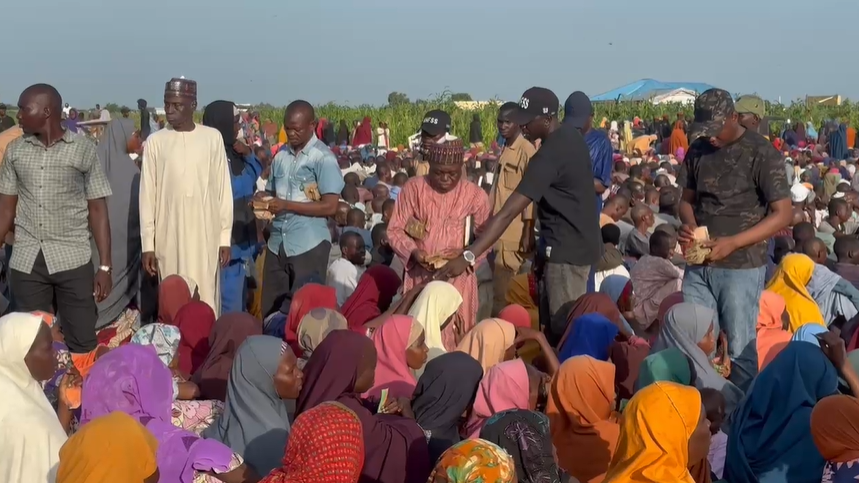
A humanitarian void
The Borno State Government, alongside humanitarian agencies, scrambled to provide aid. Yet, amid the efforts to register and assist the displaced, the specific plight of PWDs slipped through the cracks. In total, more than 2,500 people with disabilities in the flood prone areas were directly affected by the flood, many of them left stranded in their homes as the waters rose, with over 150 missing or presumed dead, according to the National President of the Joint National Association of Persons with Disabilities (JONAPWD), Abdullahi Ali Usman.
The figure quoted by Ali Usman is no doubt a conservative estimate. It would be recalled that precisely 3,127 PWDs comprising turned out in Maiduguri, to receive the N30,000 grant disbursed by Governor Babagana Umara Zulum, in 2019, as part of of the social protection scheme of his administration.
Going by the 2019 figure, the number of PWDs reportedly affected by the September flood, therefore, doesn’t represent the full picture.
The affected PWDs were not invisible, but rather ignored—denied access to the evacuation routes and the dignity of urgent care. The stark numbers—37 deaths, 58 injured, 414,000 displaced—are a cold, clinical testament to the devastation. But beneath these statistics lies a deeper wound, one cut by marginalisation and neglect. “Already PWDs are facing marginalisation due to their disabilities, this flood disaster is a double blow for them,” lamented Ali Usman.
Corroborating him, Abiodun Tilawe, a social psychologist and emergency aid consultant stated that, “Persons with disabilities are usually at greater risk in an emergency. More worrisome, she argued, is the fate of older PWDs with mental health conditions. “They are at a higher risk of death as the hardships experienced impact devastatingly on their mental health. Many become traumatised by the fear of losing their lives and being left behind. From experience, older PWDs find it difficult to adapt to the extreme conditions into which they are suddenly thrust. Before the disaster, they are not taught about what to do to adapt and keep themselves safe. Some of them, who were displaced from their communities by protracted conflict, lived on the streets without any caregiver. Since the flood happened, they have been unaccounted for, and nobody has bothered to look for them,” said Tilawe.
Torrents of trauma: A visceral reality
For PWDs who survived, each day in the aftermath of the flood has been an agonising reminder of their vulnerability. The disaster stripped them of their already fragile autonomy. The very essence of disability is a barrier to mobility, access, and dignity—now amplified by the unrelenting ravage of nature.
For Jelani Aliyu, life as a PWD at the Gwange 3 temporary refuge, became extremely difficult. Confined to a wheelchair, the 81-year-old revealed that the damage done by the flood made accessing every basic necessity an impossible feat. According to him, the emergency shelters were not designed for PWDs. The aid distributions were chaotic – the strong elbowed out the weak, and the disabled were left to mope on the fringes. There were no ramps, no accessible toilets, no accommodations made for people like him. He was invisible.
Yet if nature’s fury alone were not enough, the ongoing conflict in the region cast an even darker shadow over the lives of PWDs. In 2014, in the town of Damasak, Mohamadou, a blind man of 53 years, fled from his home as Boko Haram laid siege to his community. Blind and defenseless, he clung to his wife and son as they swam across the treacherous Yobe River, ducking a volley of gunshots from the rampaging terrorists. “We swam like fish,” he recalled, though he could not see the river that threatened to claim his life.
For two years, Mohamadou lived in a refugee camp, dependent on the kindness of his son and strangers. But his disability marked him as prey. In the lines for aid, his young son was frequently shoved aside by stronger, older men, and time after time, he returned empty-handed.
“I would wait in line with my young son to get aid, but adult refugees would kick children away, including my son. We were too weak to fight back and would often lose our turn and return without getting anything from the distribution,” he said.
Mohamadou, like so many PWDs displaced by both flood and conflict, became a ghost—present but unseen, alive but uncared for.
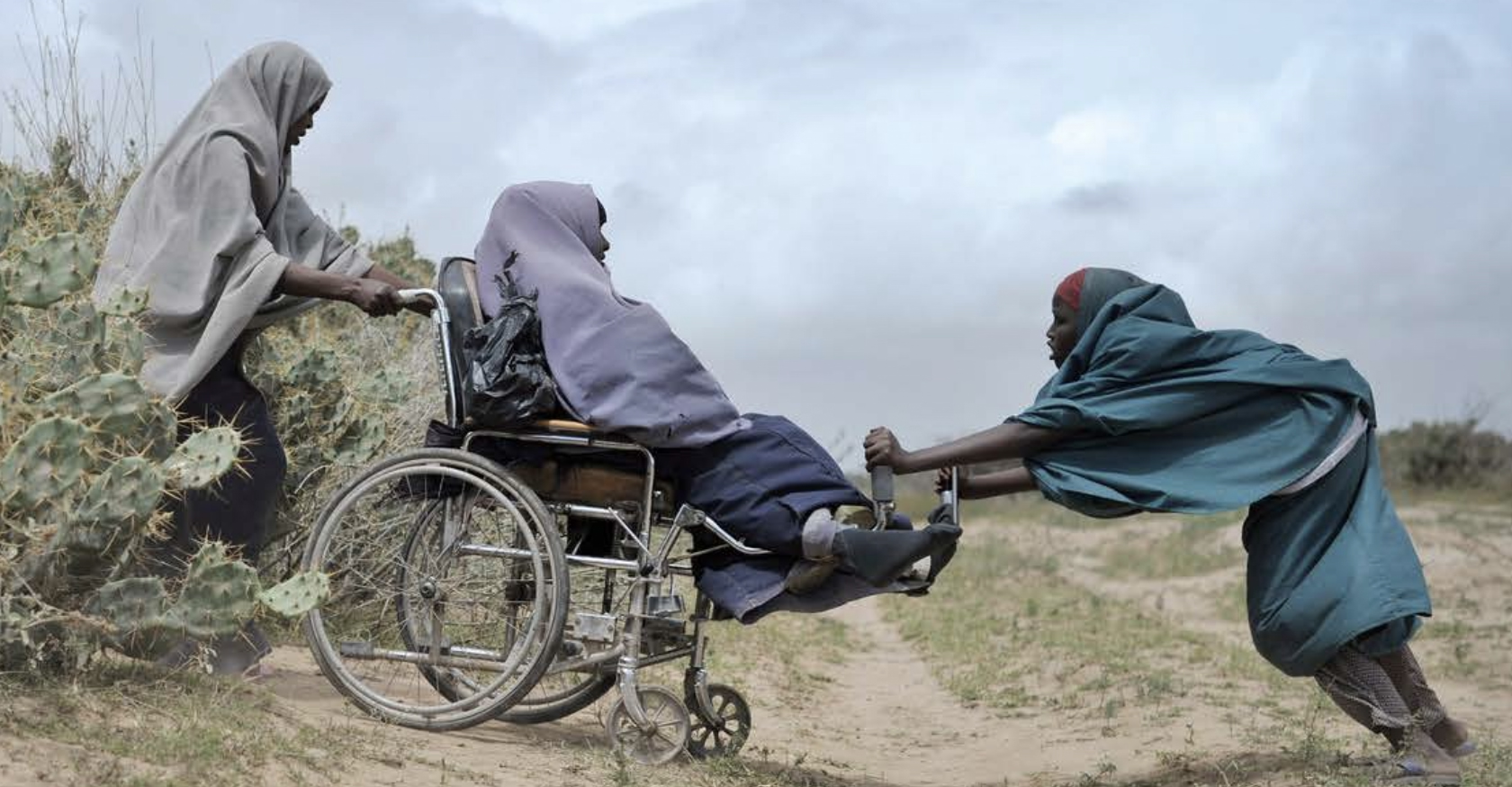
It’s a hard life for PWDs
Nigeria was affected by the worst floods in a decade between June and November 2022, according to the Internal Displacement Monitoring Centre (IDMC). The floods triggered over 2.4 million displacements, the highest disaster displacement figure in sub-Saharan Africa in 2022. Half of the displacements were reported in the southern state of Bayelsa in the Niger river delta, but Anambra and Kogi were also heavily affected. Displacement camps in the north-eastern state of Borno were also flooded, forcing thousands of people already displaced by conflict and violence to flee again. By comparison, floods triggered 166,000 displacements in 2023, a figure in line with the average of the past decade. By the end of 2023, 81,000 people were still living in internal displacement due to disasters, a more than ten-fold reduction compared to the end of 2022.
Disaster displacement, whether triggered by cyclones, wildfires, floods, or other hazards, is a growing global issue with particularly harsh consequences for PWDs, who have to endure heightened risks due to discrimination and barriers in accessing essential services.
In 2020 and 2021, the UN noted that older PWDs may encounter unique challenges during climate-related disasters, such as the Borno flood. Similarly, a 2021 report by Women in Displacement (WID) revealed that 27% of IDPs in northeast Nigeria have a disability—a figure that has increased since the insurgency. As a result, PWDs living in camps are disproportionately affected, and frequently excluded from key interventions.
According to the WHO’s 2018 World Disability Report, many PWDs in Nigeria, are disproportionately affected in a disaster, emergency, and conflict situations due to inaccessible evacuation, response, and recovery efforts. The WHO notes that they are more likely to be left behind or abandoned during evacuation in disasters and conflicts due to a lack of preparation and planning, as well as inaccessible facilities, services and transportation systems.
During floods, older PWDs would require greater assistance and additional time to evacuate, but they receive less support. Further findings revealed that most IDP camps are not accessible and people with disabilities get turned away from the emergency shelters, oftentimes, due to a perception that they need “complex medical” services. Consequently, older PWDs find themselves at greater risk as they are more likely to suffer medical conditions – such as heart or respiratory conditions – through extreme situations, according expert opinion. Older PWDs may also take medications that cause intolerance and impair the body’s response to cold and heat. The staggering death rates of people with disabilities and older people during the 2021 heatwaves in British Columbia (BC), Canada, illustrates these points: 91 percent of those who died had a chronic medical condition or a disability and 90 percent were older people.
Due to the lack of accurate data, it is often unclear exactly how many people with disabilities and older people are affected by a particular disaster as indicated by the Borno flood. The lack of accurate data on the number of IDPs living with a disability and their location equally poses challenges to monitoring their needs and allocating resources. It also makes it difficult to tailor support and assess the inclusivity of responses over long term recovery and reconstruction efforts.
About a billion people, or 15 per cent of the globe’s population, are estimated to have a disability, of whom 80 per cent live in low- and middle-income countries, according to the Internal Displacement Monitoring Centre (IDMC). The global number of people with disabilities is increasing, partly because of ageing populations and a rise in chronic health conditions. It is not known how many people with disabilities live in IDP camps associated with disasters. The IDMC estimates that 5.1 million people were still displaced as a result of disasters at the end of 2019, but this figure is highly conservative. This is because data on the number of people living in displacement after a disaster event is scarce.
Accessibility issues, stigmatisation and variations in definitions tend to render IDPs with disabilities invisible during data collection. They are, as a result, often under-identified. For example, when Ambae Island in Vanuatu was evacuated in 2017 because of increased volcanic activity, there were concerns that a significant number of people with disabilities had not been identified among the evacuees. The International Organization for Migration’s Displacement Tracking Matrix (IOM-DTM) reported 37 people with disabilities out of 5,125 people located in one evacuation centre. This represented less than one per cent of the total displaced population. Sources vary on the prevalence of disability in Vanuatu, but 2019 data from the UN placed it at up to 12 per cent.
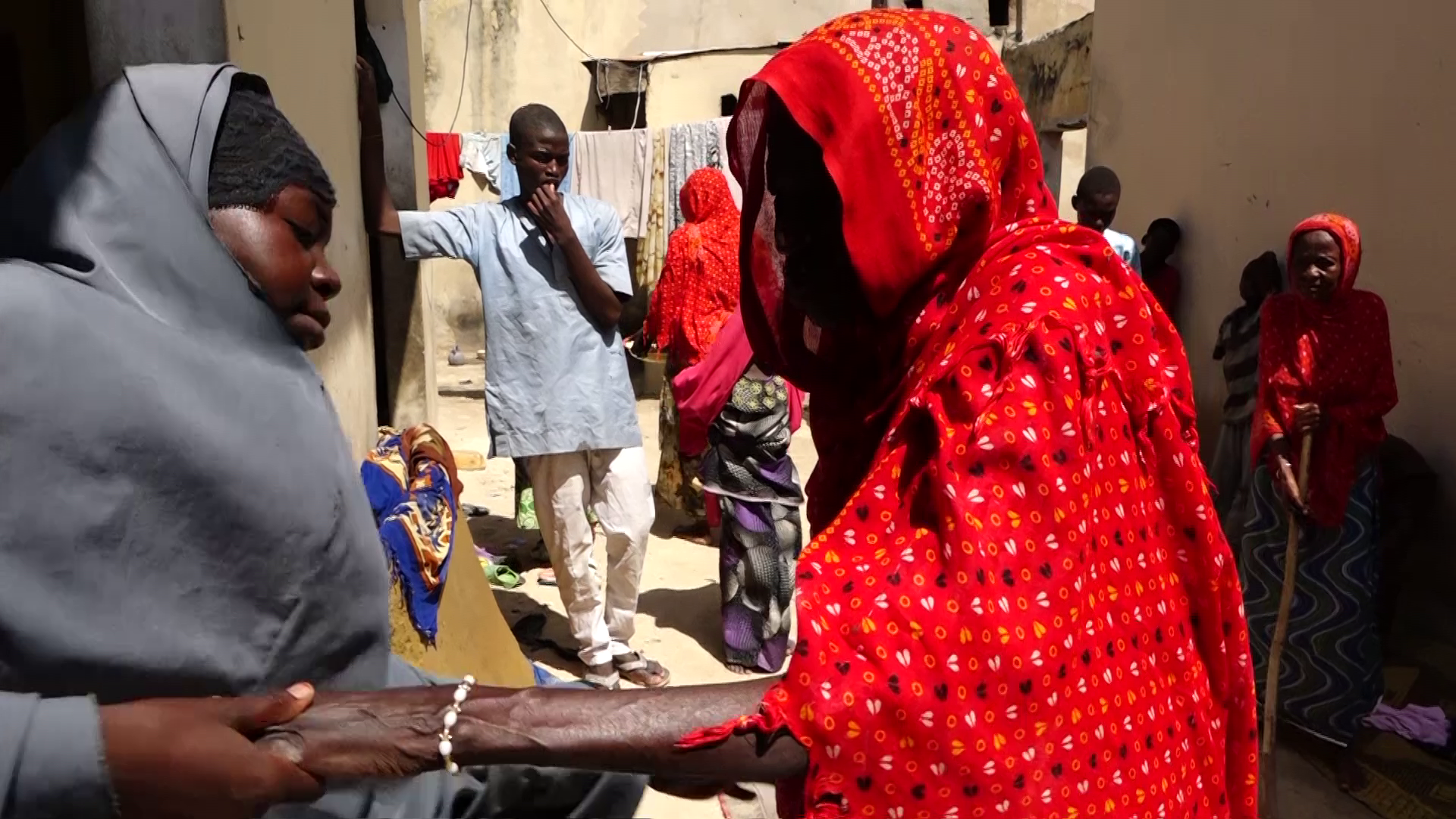
Disability Bill: Rosy in print, pale in execution
On January 23, 2019, Nigeria’s former President Muhammadu Buhari signed into law the Discrimination Against Persons with Disabilities (Prohibition) Act, 2018, following nine years of relentless advocacy by disability rights groups and activists.
The law prohibits discrimination on the basis of disability and imposes sanctions including fines and prison sentences on those who contravene it. It also stipulates a five-year transitional period for modifying public buildings, structures, and automobiles to make them accessible and usable for people with disabilities.
The law also established a National Commission for Persons with Disabilities (NCPD) in 2020. The NCPWD, tasked to guarantee PWDs access to housing, education, and healthcare, is also empowered to receive complaints of rights violations and support victims to seek legal redress amongst other duties.
Yet, one thing the NCPWD hasn’t done is to ensure the protection of Nigerians with disabilities during a natural disaster, emergency or conflict.
Lack of data, conflicting PWDs figures accentuate social
exclusion
Quoting recent World Health Organisation (WHO) figures, the immediate past executive secretary of the NCPWD, James Lalu, disclosed that currently, there are over 35.1 million persons living with disabilities in Nigeria of which a paltry 4,000 are duly registered.
Notwithstanding, his successor and incumbent executive secretary of the Commission, has reiterated the NCPWD’s commitment to ensuring inclusive policies for all clusters of PWDs in line with the Renewed Hope agenda of the incumbent administration of President Bola Tinubu.
Gufwan, made the assurance in Abuja during a parley with a delegation from the Pioneers of the Nigerian National and International Disability Civil Rights Movement and Policy Chapters, a disability advocacy Group.
“We are open to partnering with National and International bodies to ensure that the rights and privileges of persons with disabilities are protected as stipulated by the prohibition Act, 2018” he said.
Earlier, Gufwan affirmed that data remains a veritable tool for proper planning and executions of all disability inclusive projects in Nigeria.
The NCPWD had previously emphasised the importance of accurate data gathering and processing as the fundamental aspect of inclusive social policies for PWDs. “We must prioritise facts and figures of various clusters in the disability community in order to get it right,” he said, insisting that the need to ascertain the actual number of persons with disabilities is pertinent. “Over the years, persons with disabilities are believed to be about 35.1 million in Nigeria which is of course, a staggering figure but, we must revisit this and ascertain the authenticity of this figure and update it if necessary,” he said.
A 2018 estimate by the National Population Commission (NPC) states that there are about 19 million – that is, 9.6 per cent of 198 million-population approximately – living in Nigeria.
In Nigeria, social protection for PWDs remains weak, despite government claims of increased provisioning for them. The Discrimination Against Persons with Disabilities (Prohibition) Act, passed only after years of advocacy, has done little to address the deep-rooted exclusion PWDs face in society. Discrimination persists, driven by negative perceptions and cultural stigmas that label disabled individuals as cursed, especially in communities lacking proper disability-inclusive governance.
This exclusion often results in poverty, dependence on others, and health challenges. In the conflict-ridden northeast, PWDs, particularly women and children, suffer more acutely, being unable to pursue livelihoods or enjoy basic social rights.
A report by the Grassroots Researchers Associations (GRA) -authored by written by Timothy Ali Yohanna – revealed that PWDs in northeast Nigeria suffer frequent violations of their rights. These include opposition to marriages with non-disabled individuals, denial of medical care due to financial constraints, denial of access to decent shelter, and exclusion from social opportunities.
More worrisome is the institutionalised disregard of their right to life as established prior to, during, and in the aftermath of the Borno flood. These discriminatory practices and lack of disability-inclusive policies rendered PWDs particularly vulnerable during the disaster, further deepening their already precarious situation.
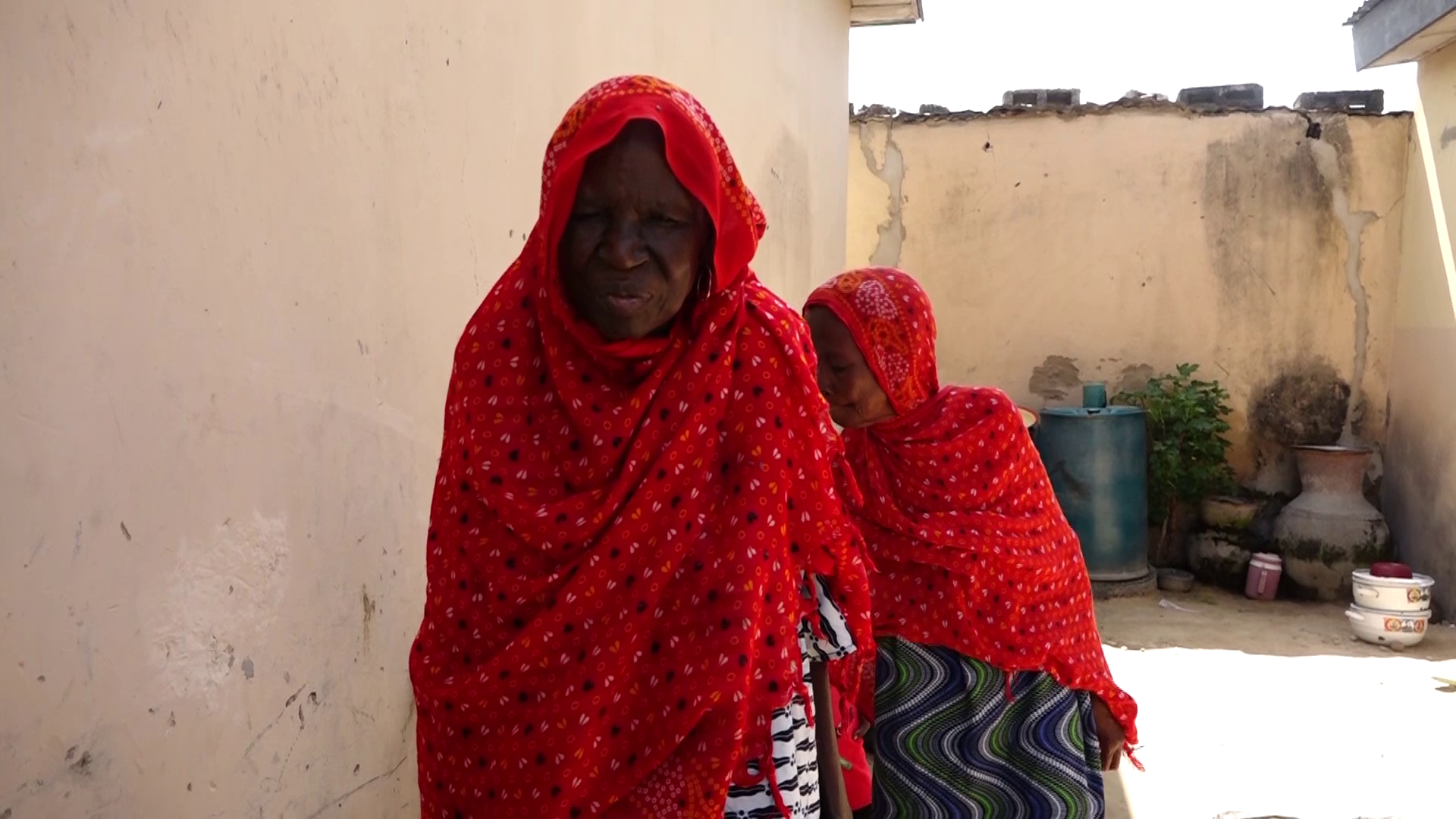
Beyond the Storm: A call for inclusion
Whether fleeing an extreme weather event or conflict, “disabled people are among the most vulnerable, and are more likely to be side-lined in every aspect of the humanitarian assistance process,” said Cheick Ba, Norwegian Refugee Council (NRC)’s Country Director in Nigeria, in the wake of Mohamadou’s predicament.
“They face multiple barriers in accessing aid, information, healthcare and protection. We, humanitarians, must do much better in our work. We have to systematically identify and register displaced persons with disabilities,” said Ba.
Article 11 of the United Nations Convention on the Rights of Persons with Disabilities in risk and humanitarian emergencies, pays particular attention to the obligation of States and parties to undertake “all necessary measures to ensure the protection and safety of persons with disabilities in situations of risk, including situations of armed conflict, humanitarian emergencies and the occurrence of natural disasters.”
Environmental dangers and natural disasters like the Borno flood, can lead to the onset of many types of disabilities, and inaccessible environments prevent persons with disabilities from taking part in social and economic recovery. Rehabilitation and reconstruction efforts, therefore, must not only be inclusive and responsive to the needs of all people, including PWDs, but should include the latter’s participation, to ensure that their needs and rights are respected.
Women with disabilities, Aji, are a particularly vulnerable group whose needs should be included at all stages of recovery and reconstruction efforts.
But that is in the long run, in the short run, their survival depends on the goodwill of neighbours and family – those who dare look their way, not to scorn their ordeal or simply talk eyes to their grief.
As the waters recede and Maiduguri takes stock of the damage, there is a sense of loss so profound it is hard to put into words. Lives have been shattered, homes destroyed, communities torn apart. But amid the wreckage, there is also a spirit of resilience, as elderly PWDs are left adrift, far from the government’s reconstruction plans.
In the absence of government support, Zara Aji, for instance has learnt to take each day as it comes. In the waning light of day, she lounges on the broken veranda of what was once her home.
At her last encounter with the reporter, giant houseflies buzzed lazily in the thick air, around her, their tiny, winged bodies hovering over her face as if drawn to the scent of her sorrow. They alighted on her eyelids, her cheeks, her lips—silent witnesses to the desolation that had swept through her life. She did not flinch. She did not swat them away. Instead, she sat in stoic, heartbreaking inaction, allowing the flies to do as they pleased. Their buzzing filled the air with a strange, almost haunting hum, as though they too, mourned the loss she had endured.
For Zara Aji, there is no going back to what was. The flood has changed everything. On several days, she relives through the darkness of her existence, that fateful night in September, when the skies over Maiduguri wept with a fury rarely seen, and the Alau Dam collapsed, spilling its contents into the vulnerable heart of Borno, submerging the homes and lives of its people. Gwange, the neighbourhood where she had lived for years, was now a shell of itself—a landscape drowned in mud and sorrow.
Aji, at 83 and visually impaired, could not see the destruction around her. But she could feel it in the cold touch of the air, the dampness that clung to her skin, and the hollow echo of the neighbourhood’s once-familiar sounds.
Her frail, fragile memories remain a quiet witness to the horror of the reptilian flood that invaded her home, threatening to drown her. Aji was drowning, but salvation came on the back of her grandson’s love, in a poignant moment that whispered of a debt long owed and finally repaid.
Politics
Acting CJN Kekere-Ekun Vows Zero Tolerance for Corruption in Judiciary
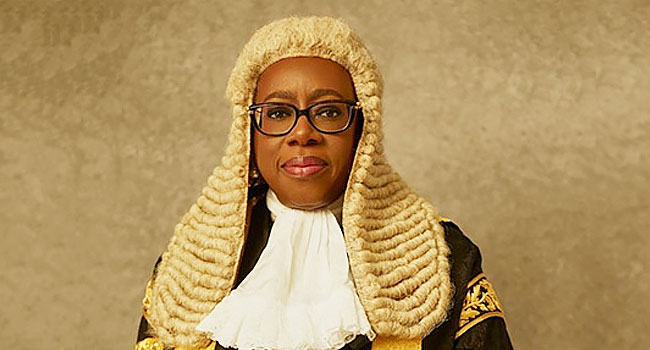

Justice Kudirat Kekere-Ekun, newly sworn in as the Acting Chief Justice of Nigeria (CJN), has made a bold pledge to root out corruption in the judiciary, vowing to enforce strict discipline and uphold the integrity of the nation’s legal system. Speaking during her Senate screening for confirmation as the substantive CJN on August 23, 2024, Kekere-Ekun declared that under her leadership, there would be “zero tolerance for corruption.”
The respected jurist, a Life Bencher and 1974 alumna of Queen’s College, Lagos, emphasized her commitment to maintaining the highest standards of judicial conduct, calling for decisive action against corrupt practices. She pledged to fast-track the handling of petitions to foster integrity and ensure that the rule of law is respected.
“I am known for integrity and discipline, and I will ensure zero tolerance for corruption,” Kekere-Ekun stated, setting a firm tone for her tenure. She also highlighted the need for improved welfare for judicial officers to enhance their performance, arguing that better conditions for judges would reduce their vulnerability to undue influence.
Kekere-Ekun outlined her vision for a more efficient judiciary, calling for reforms that would reduce the caseload at the Supreme Court. Specifically, she proposed that pre-election cases should end at the Court of Appeal, which would allow the Supreme Court to focus on more significant national matters.
“There is a need to insulate the judiciary,” she said, emphasizing the importance of safeguarding judicial independence through stronger laws and stringent appointment processes for judges.
The Acting CJN also addressed the issue of ex parte orders and interim injunctions, which have often been abused in Nigeria’s courts. She warned that any judicial officers found guilty of granting such orders recklessly would be dealt with decisively, signaling her determination to clamp down on unethical legal maneuvers.
Her strong anti-corruption stance came into sharp focus during the screening when Senator Benson Konbowei from Bayelsa Central referenced a comment made by former UK Prime Minister David Cameron, who once described Nigeria as “fantastically corrupt.” The senator provocatively asked whether Kekere-Ekun could identify corrupt individuals in the Senate or the Executive. While dismissing the question as rhetorical, she was supported by Senate President Godswill Akpabio, signaling a mutual understanding of the sensitive nature of the issue.
Senator Akpabio also raised concerns about the influence of senior lawyers who publicly comment on sub judice cases, a practice that could potentially sway judicial outcomes. In response, Kekere-Ekun assured that those found guilty of such actions would face punishment, underscoring her resolve to uphold the sanctity of judicial proceedings.
Following the question-and-answer session, where senators from all six geopolitical zones had the opportunity to interrogate the acting CJN, Kekere-Ekun was asked to take a bow—a customary gesture signaling confidence in her capacity to lead the judiciary.
Kekere-Ekun’s screening came after President Bola Tinubu formally requested her confirmation as the Chief Justice of Nigeria. The Senate’s session saw her accompanied by fellow Supreme Court judges, judicial officers, and senior presidential aides on National Assembly matters.
Her tenure as CJN, if confirmed, promises to usher in a new era of reform and discipline within the judiciary, with the goal of restoring public trust and ensuring that justice is not only served but seen to be served across the country.
-

 Uncategorized7 years ago
Uncategorized7 years agoThese ’90s fashion trends are making a comeback in 2017
-

 Uncategorized7 years ago
Uncategorized7 years agoAccording to Dior Couture, this taboo fashion accessory is back
-

 Uncategorized7 years ago
Uncategorized7 years agoThe final 6 ‘Game of Thrones’ episodes might feel like a full season
-

 Insight7 months ago
Insight7 months agoTinubu sacks two heads of govt agencies, picks replacements
-

 News10 months ago
News10 months agoNigeria Moves Up In Corruption Perception Index – TI
-

 Uncategorized7 years ago
Uncategorized7 years agoThe old and New Edition cast comes together to perform
-

 Uncategorized7 years ago
Uncategorized7 years agoUber and Lyft are finally available in all of New York State
-

 Uncategorized7 years ago
Uncategorized7 years agoMod turns ‘Counter-Strike’ into a ‘Tekken’ clone with fighting chickens



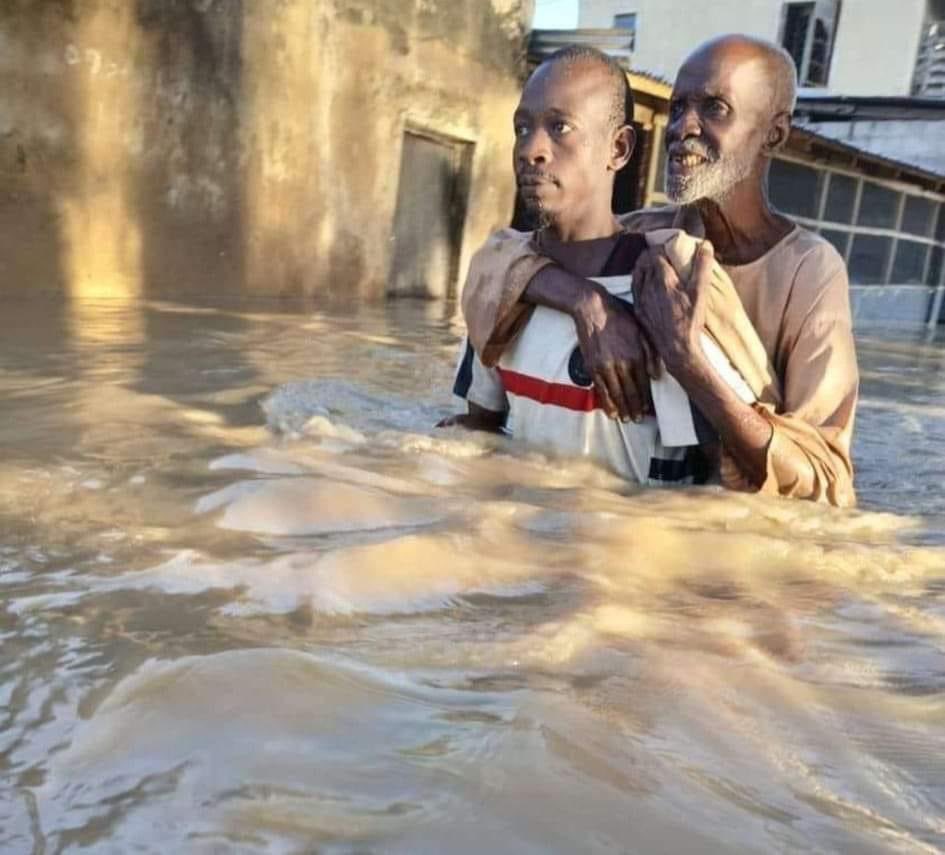



Jawn Staff
July 11, 2017 at 10:41 pm
Neque porro quisquam est, qui dolorem ipsum quia dolor sit amet, consectetur, adipisci velit, sed quia non numquam eius modi tempora incidunt ut labore et dolore magnam aliquam quaerat voluptatem.